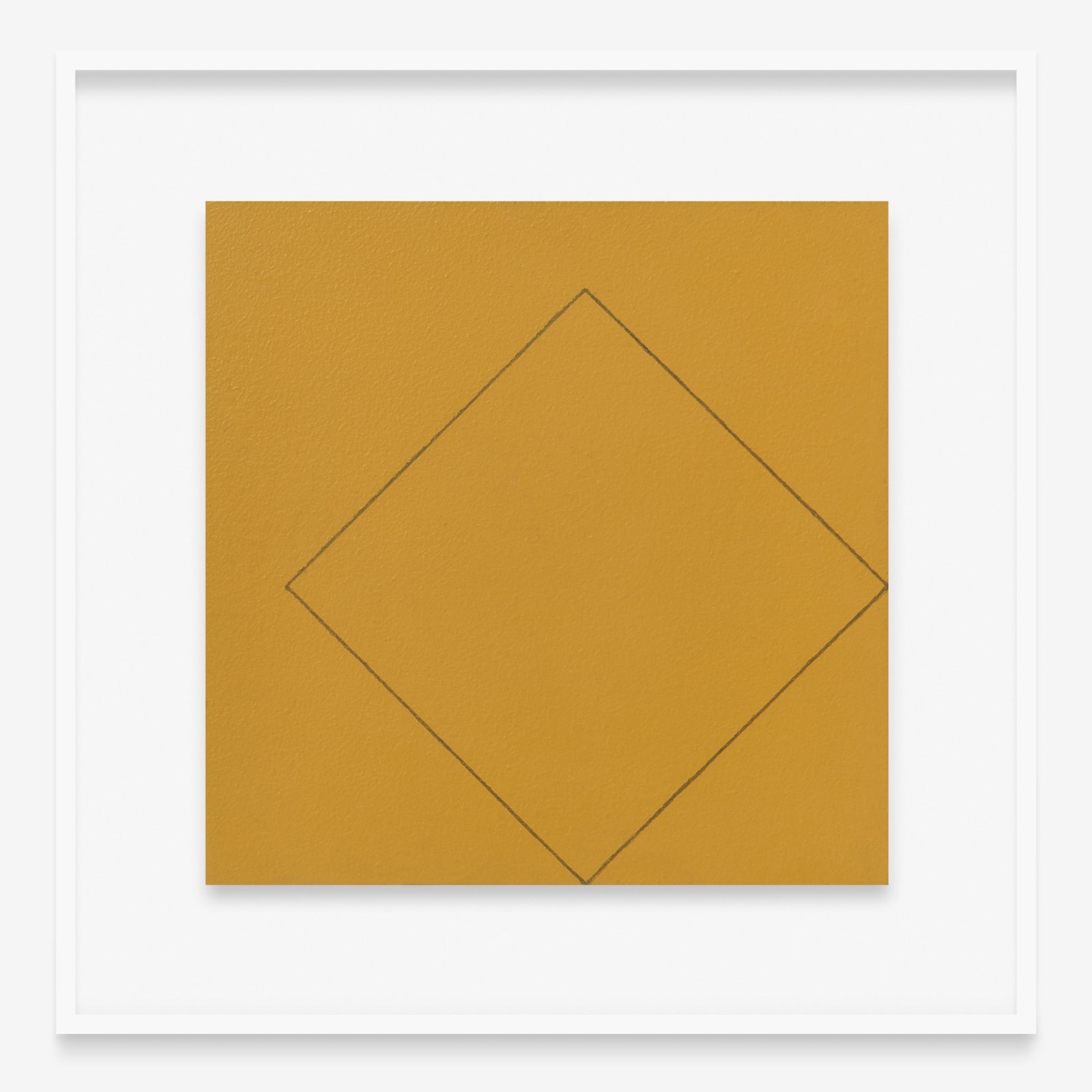-
Artworks
Robert Mangold
Square within a Square, 1974Acrylic and black pencil on Masonite13 x 3/4 x 13 in (33 x 1.9 x 33 cm)© 2025 Robert Mangold / Artists Rights Society (ARS), New York. Courtesy of Zeit Contemporary Art, New York.Further images
Within every art movement, there are certain works which so clearly embody their guiding principles that they become definitive icons of the movement at large. For Minimalism, Robert Mangold’s Square...Within every art movement, there are certain works which so clearly embody their guiding principles that they become definitive icons of the movement at large. For Minimalism, Robert Mangold’s Square within a Square is precisely that. Completed in 1974, this painting is both a sign of his burgeoning maturity as an artist, and a definitive representation of the minimalist attitude towards art. Its reductionist composition, raw materiality, and self-referential subject matter come together to create a piece that perfectly communicates the ideas he helped to establish and further develop as the youngest member of this generation working in New York in the 1960s and 70s.What makes this painting so essential to Mangold’s oeuvre is that it represents his fully realized application of a newly critical element in his work: the line. Drawn commonly with black pencil, this new feature began to consistently appear in the early seventies and would carry on being an indispensable component of his practice. These lines, in tandem with the works’ borders, create spatial harmonies that emphasize above all their mutual reliance. Much of what makes Mangold’s paintings so crucial to the ethos of minimalism is the constant reference to their own totality, and Square within a Square offers a quintessential experience of this compositional integrity.
Existing in the space between image and object, the materiality of Mangold’s paintings draws attention to both their physical and visual presence. The use of Masonite as the painting surface in Square within a Square likens the work to the wall itself, highlighting the minimalist sentiment for industrial materials and the promotion of the banal over the sublime. Mangold further reinforced this idea by using a roller to apply the paint, much akin to painting an actual wall.
Square within a Square represents an important cornerstone of Mangold’s career, resolute in its intention from the very beginning. As is evident from the preliminary sketch for the painting in the collection of the National Gallery of Art in D.C., Mangold was aware of the infinite nature of this design. When considered in relation to one another, the altered orientation of the final piece places the two works in perpetual reference to one another, further elevating the message of this work. He reminds the viewer that these principles of design exist everywhere in life, whether in a fine work of art or in the unassuming wall behind it. Square within a Square is a testament to the core beliefs of Minimalism, and an iconic representation of Mangold’s artistic’s pursuits.
NOTES
This artwork is signed 'R. Mangold' and dated on the stretcher.
This artwork is registered in the artist's studio and will be included in the upcoming catalogue raisonné of Mangold's paintings. We are grateful to Ms. Susanna Singer from the studio of Robert Mangold for her invaluable assistance in cataloging this work.
Provenance
Galleria La Polena, Genova
Galleria La Bertesca, Düsseldorf
Private collection, North Rhine-Westphalia, Germany
Private collection, United States
Exhibitions
Cologne, Germany, International Art Fair Cologne, November 6 - 10, 1975
Genova, Italy, Galleria La Polena, Robert Mangold, October 13 - November 13, 1977, cat. 9 (illustrated in black and white, unpaged)
Literature
Will Heinrich, "At Salon Art + Design, Gold Bracelets and Lipstick-Red Monochromes," The New York Times, November 12, 2023, Section C, Page 5. Available online: https://www.nytimes.com/2023/11/12/arts/design/salon-art-design.html.1of 4








